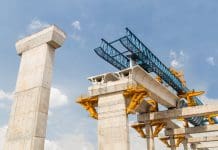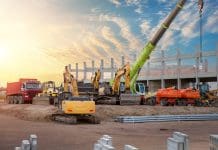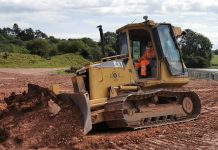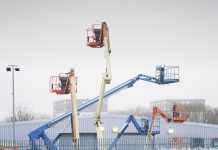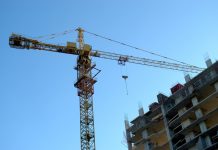Kevin Minton, Director of the Construction Plant Hire Association highlights the levels of risk involved in ground conditions for machinery and how it can be driven down…
All contractors on site don’t just need to think about what happens above ground – they need to know and understand the ground they’re working on. Ground failure can have serious and life-changing consequences.
The load that plant places on the ground is in many cases simply the weight of the machine. But it will also include the weight of the load or object that the plant is lifting – for a mobile crane, this could mean a massive increase in the force being applied through the outriggers, which will change as the load is moved.
The force put into the ground can be a lot more than just the weight of the machine and the load. An excavator that is pulling a sheet pile also has to overcome the friction and gripping force of the ground that is holding the sheet. These loads are increased by the natural forward tipping movement of the excavator, putting more force at the front of the tracks – frequently close to the edge of the excavation it is working on.
If the ground gives way, the plant and its load could move unexpectedly, or completely overturn. This could be caused by something as simple as an outrigger punching through a tarmac surface, or a more complex failure of soil strata some metres below the surface.
The strength and nature of the ground needs to be considered from the outset in any construction project, and is equally important to the selection and management of the plant. Ground use should be planned and managed as if it were part of the overall plant system.
The sorts of “ground” that need to be taken into account are as varied as the complete range of construction sites. This includes natural undisturbed ground, areas that have been worked on in the past or as part of the current project, embankments, spoil heaps, roadways, carparks, asphalted areas, docks, and other constructed structures. The surface of the ground can hide drains, culverts, tunnels and other underground features that can seriously affect its strength, both in narrow areas and over a wider worksite.
Whenever a machine loses control or overturns, there is always the possibility of serious or fatal injuries to the driver, and those working in the area. Even if no injury is caused, there will be serious losses, as not only is production disrupted, but the recovery operation can be difficult and costly. Research work by HSE found that for every £1 recovered through insurance following an incident, there was a further £8 to £36 that could not be recovered, which had to be borne directly by the employer.
The principal contractor in charge of the site has ultimate responsibility for assessing and managing the capability of the ground. They must work with plant companies, sub-contractors and ground engineering specialists as necessary to minimise the risk of ground failure.
Assessment and management of ground conditions must be part of the planning process. There are basically two strands of activity which are best done in parallel. One is to select the plant and to determine the nature and scales of the loads and forces that it will apply to the ground. The second strand is to gather information about the ground and its bearing capacity. When sufficient information is gathered, an assessment is made as to whether the ground will take the loads imposed by the plant. This may mean that the plant needs to be changed, or that the job needs to be done differently, or that work needs to be done to improve the ground’s strength.
Information about the ground itself may already be readily available from previous assessments or records, plans and specifications about work that has already been done. Sometimes, however, investigations on site are required. This could involve digging trial pits, or collection of samples using bores.
The level of detail in the ground investigation and assessment needs to reflect the complexity of the job, the reliability of the information, and the margins of safety that result from the selection of plant. Monitoring and management of ground conditions needs to continue as work progresses, not only to take account of changes in the task being done, but also changes to site conditions as a result of rain, snow, flooding or other influences.
The Strategic Forum Plant Safety Group recently wrote new guidance on Ground Conditions, in conjunction with the HSE, Temporary Works Forum and other industry bodies. Although guidance documents were already available, the new work emphasises the importance of the principal contractor’s coordinating role. By ensuring that the supply chain communicates and works together, overall levels of risk can be driven down. When sectors work in isolation, responsibilities and liabilities can frequently be displaced to other parties, without actually reducing overall levels of risk.
The new guidance on Ground Conditions for Construction Plant is published by Construction Plant-hire Association (CPA), and can be downloaded from the CPA website at www.cpa.uk.net .
Kevin Minton
Director
Construction Plant Hire Association
Tel: 020 7796 3366
enquiries@cpa.uk.net



